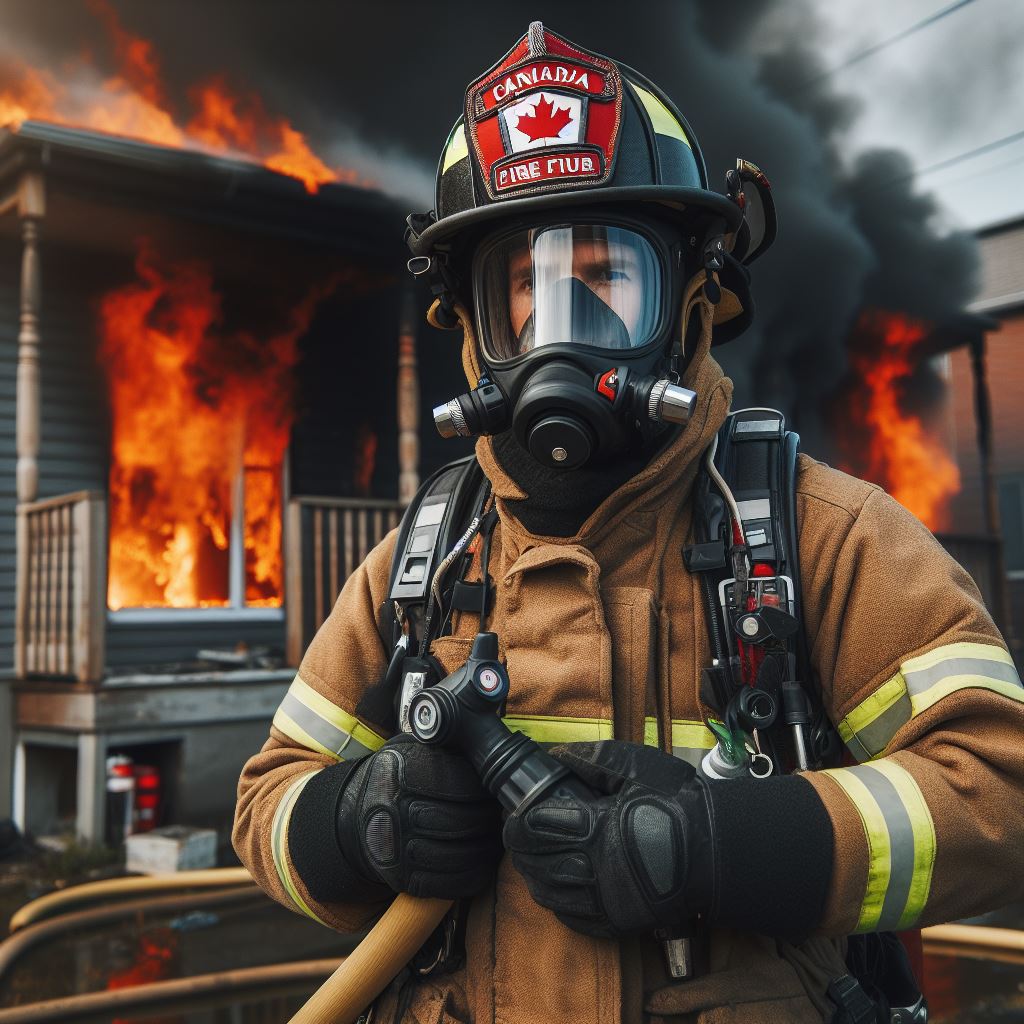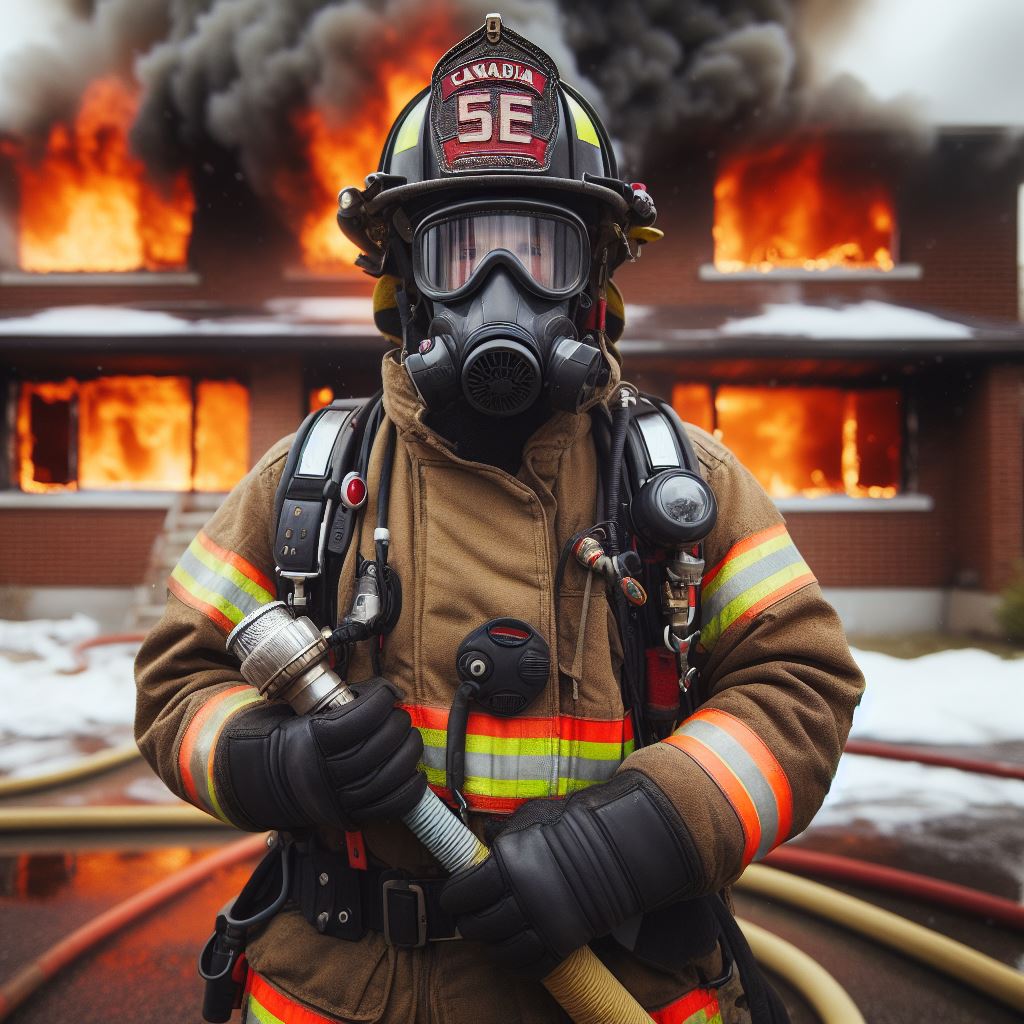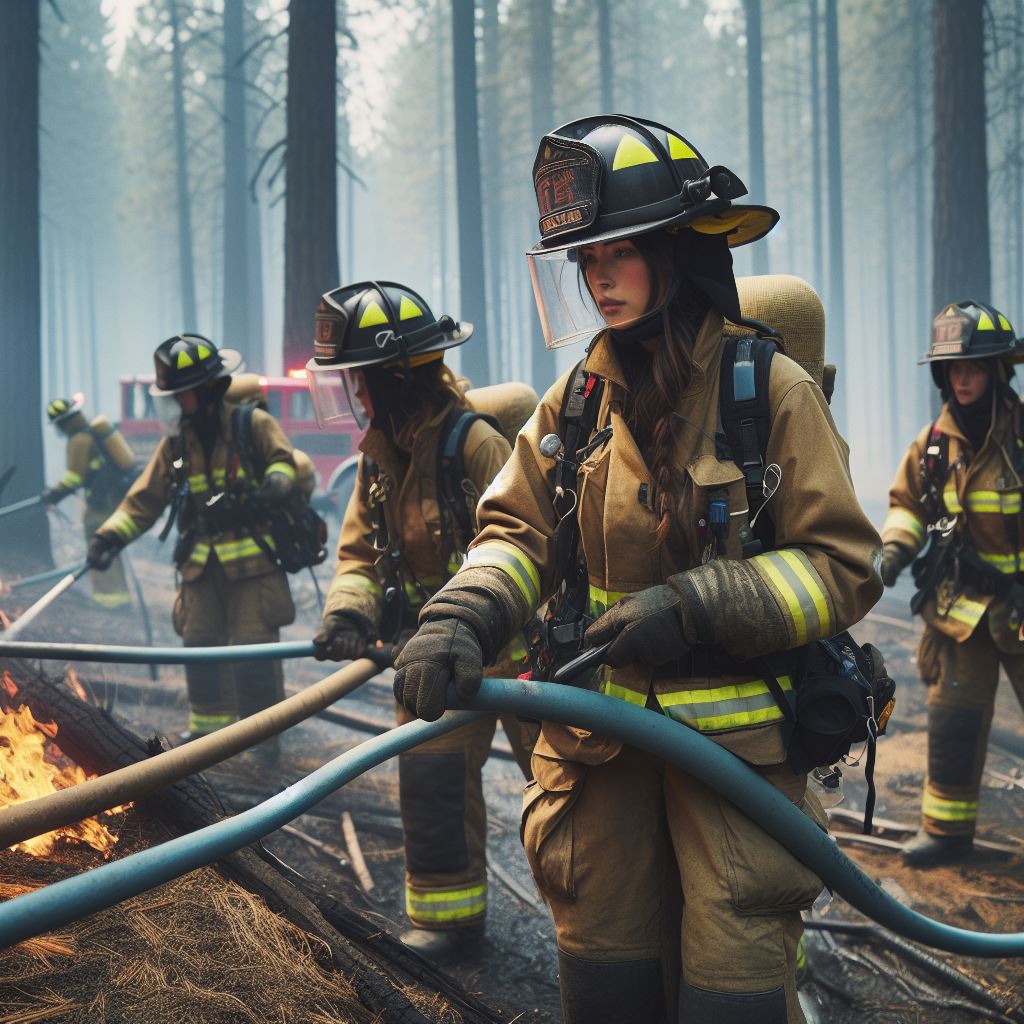Introduction
Historic fires echo through time, urging us to glean crucial lessons.
The Great Fire of London (1666) underscored the imperative of robust urban planning and fire prevention.
The Triangle Shirtwaist Factory fire (1911) hauntingly emphasized safety negligence’s toll, driving home the urgency of stringent regulations and workers’ rights protection.
The Peshtigo Fire (1871), America’s deadliest forest fire, claimed over 1,200 lives.
It stressed the need for judicious forest management and effective fire suppression methods.
These infernos birthed advancements: fire codes, emergency response systems, and firefighting techniques. Understanding their roots and outcomes aids in averting future catastrophes.
Implementing fortified fire safety measures, public education, and cutting-edge technologies shields lives and heritage.
Historic fires are poignant tutors, shaping our present and fortifying communities for the ages.
The Great Fire of London
The Great Fire of London was a catastrophic event that occurred in 1666.
It had a profound impact on the city and its citizens, leading to significant changes in city planning, fire prevention measures, and firefighting techniques.
Overview of the Great Fire of London
The Great Fire of London, which started on September 2, 1666, raged for three days, destroying a substantial portion of the city.
It originated in a bakery on Pudding Lane and quickly spread due to strong winds and the close proximity of timber-framed buildings.
Causes of the Fire
The fire was caused by a combination of factors. The hot and dry summer of 1666 created ideal conditions for a fire to spread rapidly.
Additionally, the city’s buildings were predominantly made of wood, making them highly flammable.
Human factors also played a significant role.
The lack of proper fire prevention measures, such as fire-resistant building materials and sufficient firefighting equipment, contributed to the rapid spread of the fire.
Impact on the City and its Citizens
The Great Fire of London resulted in the destruction of approximately 87 churches, 13,200 houses, and numerous other buildings.
It left around 100,000 people homeless and caused immense economic loss.
Many citizens lost their belongings, and some lost their lives in the fire.
The city’s infrastructure, including critical institutions like hospitals and schools, was severely damaged.
Lessons Learned from the Great Fire
- City Planning: The Great Fire highlighted the importance of well-planned cities with wider streets, proper building materials, and sufficient firebreaks.
- Fire Prevention Measures: Stricter regulations were implemented to ensure fire-resistant construction materials and regular inspections of buildings.
- Improved Firefighting Techniques: The fire led to the establishment of a professional firefighting force, equipped with better firefighting tools and techniques.
The Great Fire of London served as a catalyst for change. It prompted the introduction of building codes aimed at reducing the risk of fires and improving public safety.
The rebuilding of the city also marked the transition from timber-framed buildings to those made of stone and brick.
In fact, the Great Fire of London was a devastating event that had a lasting impact on the city and its inhabitants.
It taught valuable lessons about the importance of proper city planning, fire prevention measures, and improved firefighting techniques.
Read: Top Firefighting Schools Across Canada
Unlock Your Career Potential
Visualize a clear path to success with our tailored Career Consulting service. Personalized insights in just 1-3 days.
Get StartedThe Great Chicago Fire
The Great Chicago Fire in 1871 was a devastating event that had a significant impact on the city’s history.
Overview of the Great Chicago Fire
The Great Chicago Fire was a catastrophic fire that occurred in Chicago, Illinois, on October 8-10, 1871.
It started in a barn owned by Patrick and Catherine O’Leary and quickly spread throughout the city.
The fire burned for two days, destroying an estimated 17,450 buildings and leaving approximately 100,000 people homeless.
Causes of the Fire
In the parched city, drought turned wooden structures into a tinderbox.
A spark, perhaps from a lantern or a cow, ignited the catastrophe in O’Leary’s barn.
Firefighters, underestimating the blaze, faltered in its crucial early stages.
The Great Chicago Fire unfolded with lessons on the explosive combination of environmental conditions, ignition sources, and the importance of swift, decisive action.
The devastating blaze underscores the critical need for communities to prioritize fire prevention measures and preparedness.
Learning from history, urban planning now integrates fire-resistant materials and advanced firefighting strategies.
The echoes of the Great Chicago Fire serve as a stark reminder, prompting us to remain vigilant, proactive, and resilient in the face of potential fire disasters.
Devastation and Impact on the City
The Great Chicago Fire caused extensive damage throughout the city, leveling entire neighborhoods and leaving only ashes in its wake.
The fire destroyed iconic buildings such as the Chicago Water Tower and the courthouse, leaving a lasting impact on the city’s architecture.
The infrastructure was also severely affected, with major transportation routes, including railways and bridges, destroyed.
The fire had a profound socio-economic impact on the city, leading to years of rebuilding and recovery.
Lessons Learned
The Great Chicago Fire served as a wake-up call, highlighting the need for improved fire safety measures and preparedness.
The lessons learned from this tragic event were instrumental in shaping future building codes and regulations, as well as community awareness and prevention strategies.
- In the aftermath of Chicago’s devastating fire, construction shifted towards fire-resistant materials like brick and stone. This minimized the risk of rapid-fire spread, marking a crucial turning point in architectural practices.
- Stricter fire codes emerged, emphasizing building standards, sprinkler systems, and fire-resistant treatments. The focus extended beyond structures to encompass comprehensive safety measures.
- Reform reached fire departments and emergency response systems, integrating telegraph systems for swift communication. This technological advancement improved coordination during crises.
- Community preparedness took center stage, with fire drills, education initiatives, and awareness campaigns. Empowering the public to prevent and respond to fires became a cornerstone in minimizing the impact of potential disasters.
- These lessons from historic fires have etched a resilient blueprint for urban development, emphasizing safety, awareness, and proactive measures to prevent and mitigate fire-related disasters.
The Great Chicago Fire was a tragedy that shook the city to its core. However, it also served as a catalyst for change, leading to significant advancements in fire safety and prevention.
Today, Chicago stands as a testament to the resilience and determination of its inhabitants, who rebuilt and created a safer city for future generations.
Read: Fitness Tips for Aspiring Firefighters

The Triangle Shirtwaist Factory Fire: A Tragic Turning Point
The Triangle Shirtwaist Factory fire, which took place on March 25, 1911, in New York City, is one of the most devastating industrial disasters in American history.
The fire resulted in the loss of 146 lives, mostly young immigrant women, and had a profound impact on labor laws and workers’ rights.
Causes of the Fire
A deadly fire erupted due to unsafe conditions and poor safety measures. Locked exits and absent fire escapes trapped workers.
The absence of safety protocols and the presence of flammable materials turned the factory into a perilous tinderbox.
The catastrophic incident serves as a stark reminder of the dire consequences of neglecting basic safety standards.
In the aftermath, stringent regulations and inspections were implemented to prevent such tragedies.
The lessons learned underscore the critical importance of prioritizing worker safety and enforcing robust fire prevention measures.
The haunting echoes of that fateful day emphasize the need for continual vigilance and proactive measures to ensure that history does not repeat itself.
Tragic Consequences
The consequences of the Triangle Shirtwaist Factory fire were catastrophic.
As the fire raged through the upper floors of the building, workers were left with few means of escape.
Some jumped to their deaths from the ninth floor in desperate attempts to avoid the flames. In total, 146 workers lost their lives in the fire.
The fire’s impact extended beyond the immediate loss of life. It generated public outrage over the deplorable conditions faced by the city’s garment workers, leading to widespread protests and demands for change.
Moreover, the Triangle Shirtwaist Factory fire galvanized the labor movement and became a rallying cry for workers’ rights.
It exposed the exploitive practices of many factories and created a momentum for labor reform.
Lessons Learned
The Triangle Shirtwaist Factory fire awakened a call for workplace safety, reshaping labor laws profoundly.
It emphasized the necessity of stringent safety regulations, imposing fire escapes, sprinkler systems, and fireproof materials.
This tragedy also spotlighted the significance of collective bargaining and labor unions in safeguarding workers’ rights.
Post-disaster, the International Ladies’ Garment Workers’ Union emerged, advocating for enhanced safety standards.
Additionally, the fire stressed the need for regular fire drills and emergency preparedness.
Standardizing fire drills became crucial, ensuring that employees were well-versed in emergency procedures, fostering a prompt and organized response during fires.
The lasting impact of the Triangle Shirtwaist Factory fire transcends time, fostering a collective commitment to prevent future disasters.
It stands as a perpetual reminder to prioritize worker safety and champion fair labor practices, shaping a safer and more equitable workplace for generations to come.
Read: How to Become a Firefighter in Canada
Learn More: Networking Tips for Aspiring Public Servants
The Cocoanut Grove Fire
In 1942, one of the deadliest fires in American history, known as the Cocoanut Grove fire, occurred in Boston, Massachusetts.
The fire was primarily caused by overcrowding and inadequate fire exits within the Cocoanut Grove nightclub.
Tragically, the fire claimed the lives of 492 people and injured hundreds more, making it one of the deadliest nightclub fires in history.
The Cocoanut Grove fire had a profound impact on fire safety regulations and building codes, leading to significant changes across the United States.
The lessons learned from this fire, including the importance of capacity limits, easily accessible fire exits, and improved fire safety measures in public spaces
From this devastating event, several important lessons were learned:
- Importance of capacity limits: The Cocoanut Grove had far exceeded its safe occupancy limits, leading to chaotic escape attempts and blocked exits. Strict capacity limits were subsequently implemented to prevent overcrowding in public spaces.
- Easily accessible fire exits: The inadequate fire exits and locked doors at the Cocoanut Grove hindered the escape of many patrons. It highlighted the critical necessity of having easily accessible and well-marked exit routes in public buildings.
- Improved fire safety measures: The fire also highlighted the need for improved fire safety measures, such as the installation of sprinkler systems, fire-resistant materials, and smoke alarms in public establishments.
- Emergency response coordination: The Cocoanut Grove fire showcased the importance of effective emergency response coordination. It prompted advancements in communication systems and training for fire departments to handle large-scale incidents.
After the Cocoanut Grove fire, regulations nationwide were revamped, bolstering fire safety in public spaces.
Guidelines mandated proper fire exits, occupancy limits, and preventative measures, transforming safety standards across the country.
The tragedy prompted widespread public awareness campaigns, educating people about fire hazards and emergency responses.
The Cocoanut Grove fire serves as a chilling reminder of the dire consequences of neglecting fire safety measures.
Yet, the lessons learned have markedly improved safety, making public spaces better prepared to prevent and tackle fires.
Stringent regulations and technological advancements continue to shield communities, ensuring history doesn’t repeat, securing the present, and fortifying the future.
Read: Firefighters’ Role in Canadian Communities
Conclusion
Public servant pensions hold a crucial role in retirement planning. They are designed to provide financial security to those who serve the public.
Understanding the pension structure is essential. It involves contributions from both employees and employers, ensuring a stable fund for retirement.
Active public servants benefit from defined benefit plans, guaranteeing a fixed income upon retirement. This offers a sense of financial stability in the later years.
Contributions made during service accumulate, forming the pension fund. Regular updates on fund performance and policy changes are vital for informed decision-making.
Flexibility in pension plans varies. Knowing the options for withdrawals, annuities, or lump sums is crucial for retirees to optimize their financial situation.
Pension reforms are ongoing. Staying informed about legislative changes ensures public servants make informed decisions about their retirement plans.
In the end, public servant pensions demand attention and understanding. Being proactive in learning about and managing these plans is key to a secure retirement.




